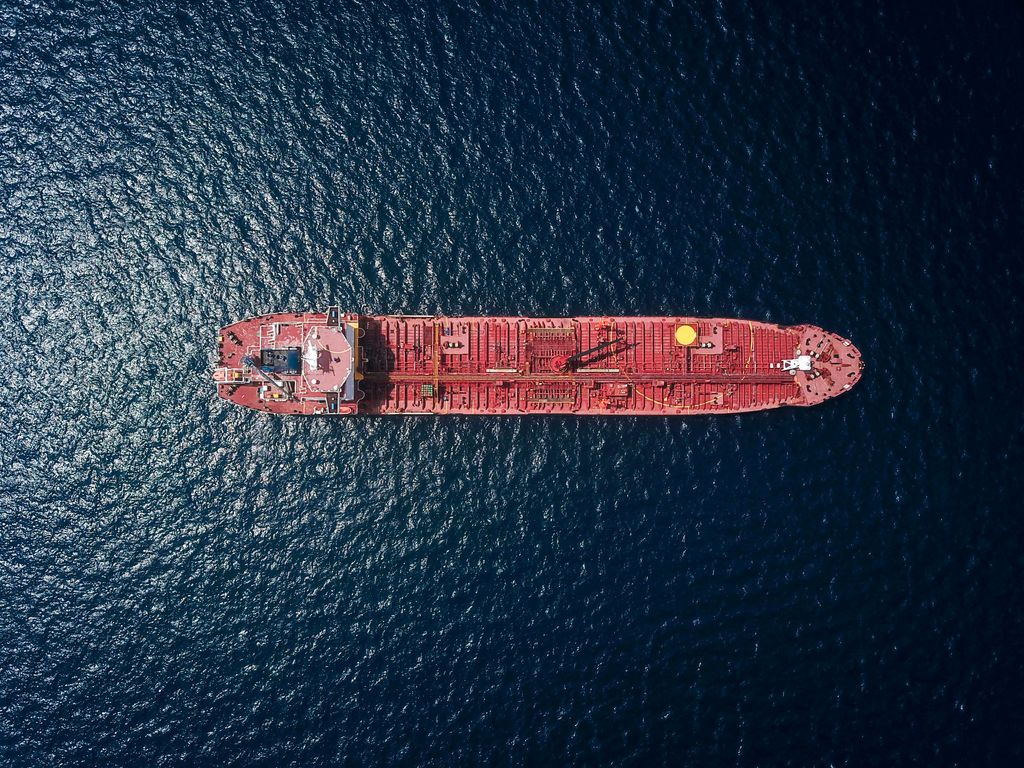In the realm of USA-South Korea electronics trade, resolving unpaid bills is a critical aspect that requires a structured approach. This article delves into a comprehensive Recovery System comprising three distinct phases: Initial Contact and Investigation, Legal Action Consideration, and Collection Rates and Fees. Each phase plays a crucial role in the process of recovering company funds and addressing unpaid bills effectively.
Key Takeaways
- Timely initial contact and investigation are essential for debt recovery success.
- Engaging local attorneys can expedite the legal action process and enhance the chances of debt collection.
- Careful consideration of collection rates and fees based on the number of claims is vital for optimizing recovery outcomes.
- Decisive closure or litigation decisions are pivotal in resolving unpaid bills efficiently.
- Understanding the implications of legal action costs and fees is crucial for making informed decisions in debt recovery processes.
Recovery System Overview
Initial Contact and Investigation
Upon receiving a new case, we spring into action. Within 24 hours, our team dispatches the first of four letters to the debtor via US Mail. This marks the beginning of our diligent pursuit.
Our skip-tracing and investigation efforts kick off simultaneously, ensuring we gather the most accurate financial and contact information available. We leave no stone unturned.
We then initiate contact through various channels—phone calls, emails, text messages, faxes, and more. Our collectors are persistent, making daily attempts to reach a resolution for the first 30 to 60 days. Here’s a snapshot of our initial approach:
- Sending the first letter to the debtor
- Conducting thorough skip-tracing and investigation
- Persistent daily contact attempts
Should these efforts not yield the desired outcome, we seamlessly transition to Phase Two, engaging our network of local attorneys to escalate the matter.
Legal Action Consideration
When we hit a wall in the recovery process, it’s time to consider legal action. We don’t take this step lightly. After exhaustive attempts to resolve the debt through negotiation, we must assess the feasibility of litigation. Here’s what happens next:
- Our affiliated attorneys engage, drafting demand letters on legal letterhead.
- We demand payment, leveraging the weight of potential legal consequences.
- A thorough review of the debtor’s assets and case facts guides our recommendation.
We stand at a crossroads: to litigate or not. Your decision will dictate our course. If litigation is chosen, be prepared for upfront legal costs. These costs are transparent and necessary to initiate court proceedings.
Remember, our goal is always to resolve the debt without legal action. But when push comes to shove, we’re prepared to advocate fiercely on your behalf.
Collection Rates and Fees
We’ve structured our fees to align with your success in recovering unpaid bills. Our rates are competitive, ensuring you get the best value for our services. Rates vary based on the number of claims and the age of the accounts. Here’s a quick breakdown:
- For 1-9 claims, accounts under 1 year: 30% of the amount collected.
- For 10 or more claims, the rate drops to 27% for accounts under 1 year.
Accounts over $1000 and less than a year old benefit from reduced rates, incentivizing the resolution of larger debts. Should legal action be necessary, we’re transparent about the costs involved. You’ll be responsible for upfront legal fees, typically ranging from $600 to $700, depending on the debtor’s jurisdiction.
We’re committed to a no-recovery, no-fee policy. If we recommend closing the case due to low recovery prospects, or if litigation attempts fail, you owe us nothing.
Remember, our goal is to resolve your claims efficiently and cost-effectively, ensuring that the financial impact of unpaid bills is minimized.
Phase One: Initial Contact and Investigation
Sending Letters to Debtors
Once we take on your case, we waste no time. Within 24 hours, letters are dispatched to the debtor via US Mail. This initial correspondence is crucial—it sets the tone and shows we mean business. Our approach is direct but professional, ensuring debtors understand the seriousness of their situation.
We don’t stop at just one letter. A series of communications follows, each designed to prompt a response. Here’s a snapshot of our process:
- First letter: Formal notification of the debt and a call to action.
- Subsequent letters: Escalating urgency, with clear consequences for non-payment.
We maintain a persistent yet respectful dialogue, always aiming for a swift and amicable resolution.
If these letters go unanswered, we’re prepared to escalate. But we always hope for—and work towards—a resolution that doesn’t require legal action. Our goal is to resolve unpaid bills efficiently, minimizing disruption to your business.
Skip-Tracing and Investigation
Once we’ve sent the initial letters, we dive deeper. Skip-tracing is our next move, a crucial step in the recovery process. We’re not just looking for the debtors; we’re uncovering their financial heartbeat. Our team employs advanced tools and techniques to track down the most current financial and contact information available.
Investigation is thorough and relentless. We analyze the debtor’s assets, business operations, and any other relevant details that could influence the recovery of your funds. Here’s what we do:
- Verify debtor’s contact details and address
- Assess debtor’s financial status
- Investigate business affiliations and asset ownership
Our goal is clear: gather actionable intelligence to inform our next steps. If the trail goes cold or the assets are insufficient, we’re upfront about it. We’ll recommend the most sensible course of action, whether that’s closure or escalation to legal proceedings.
Contacting Debtors for Resolution
Once we’ve located the debtors, we initiate direct contact. Our goal is to negotiate a fair resolution that satisfies both parties. We employ a variety of communication methods—phone calls, emails, text messages, and faxes—to reach an agreement. Persistence is key; we make daily attempts for the first 30 to 60 days.
We understand the importance of a tactful approach. Our experienced collectors balance firmness with respect, aiming to preserve business relationships while securing payment.
If our efforts don’t yield results, we transition to Phase Two, engaging local attorneys to escalate the matter. Here’s a quick overview of our initial contact success rates:
- Successful resolution through direct contact: 70%
- Cases requiring legal action: 30%
Remember, if we can’t resolve the issue, you owe us nothing until we take the next step.
Phase Two: Legal Action Consideration
Engaging Local Attorneys
Once we’ve exhausted initial recovery efforts, we engage local attorneys within the debtor’s jurisdiction. This step escalates the seriousness of the situation for the debtor. Our affiliated attorneys are well-versed in local laws and are ready to draft demand letters that carry the weight of legal authority.
We ensure that the transition to legal action is seamless, with our attorneys picking up where our collection efforts left off.
Our attorneys don’t just send letters; they actively pursue the debtor with phone calls and other direct contact methods. Here’s what you can expect:
- Immediate drafting of demand letters on law firm letterhead
- Persistent attempts to contact the debtor via telephone
- A thorough review of the debtor’s response to legal pressure
If these efforts don’t yield results, we’re prepared to advise on the next steps. Whether it’s proceeding with litigation or considering alternative resolutions, our team and affiliated attorneys are committed to guiding you through this challenging phase.
Demanding Payment from Debtors
Once we’ve engaged local attorneys, our next move is clear: demand payment. Our affiliated attorneys waste no time drafting demand letters on their official letterhead, signaling the seriousness of the situation to the debtors.
We ensure that every communication underscores the urgency and gravity of the debt owed.
If letters and calls don’t yield results, we’re prepared to escalate. Here’s what you can expect:
- Immediate drafting and dispatch of demand letters.
- Persistent follow-up calls by the attorney’s office.
- A clear articulation of the consequences of non-payment.
Our approach is firm but fair, designed to prompt a swift resolution. Should these efforts not lead to a satisfactory outcome, we’re ready to discuss the next steps.
Recommendations for Next Steps
After exhaustive efforts, we arrive at a critical juncture. We must decide whether to close the case or proceed with litigation. If the likelihood of recovery is low, we recommend closure, sparing you further costs. Conversely, choosing litigation necessitates upfront legal fees, typically between $600 to $700.
Closure is not an admission of defeat but a strategic decision to minimize losses. Should you opt for litigation, we’ll support you with our full resources, including filing a lawsuit to recover all monies owed.
We stand by our commitment to provide competitive rates and transparent fees, ensuring you’re informed at every step.
Our decision matrix is simple:
- Assess the debtor’s assets and case facts.
- Determine the potential for successful recovery.
- Recommend case closure or litigation based on our findings.
Remember, if litigation does not yield results, you owe us nothing. This is our pledge to you.
Phase Three: Collection Rates and Fees
Rates Based on Number of Claims
We tailor our rates to the volume of claims you bring to us within the first week of initiating the first account. The more claims you submit, the more cost-effective our services become.
For individual claims, here’s how our rates break down:
-
For 1 through 9 claims:
- Accounts under 1 year old: 30% of the amount collected.
- Accounts over 1 year old: 40% of the amount collected.
- Accounts under $1000.00: 50% of the amount collected.
- Accounts placed with an attorney: 50% of the amount collected.
-
For 10 or more claims:
- Accounts under 1 year old: 27% of the amount collected.
- Accounts over 1 year old: 35% of the amount collected.
- Accounts under $1000.00: 40% of the amount collected.
- Accounts placed with an attorney: 50% of the amount collected.
Our competitive rates are designed to accommodate a range of scenarios, ensuring that you receive the most efficient service for your specific needs.
We understand that each case is unique, and we’re committed to providing a transparent and fair pricing structure. Whether you have a single claim or multiple accounts, we’re here to guide you through the recovery process with clarity and precision.
Fees for Legal Action
When we decide to take the legal route, upfront costs are inevitable. These costs cover court fees, filing charges, and other related expenses. Typically, you’re looking at a range from $600 to $700, based on the debtor’s location.
Payment of these fees is a prerequisite for our affiliated attorneys to initiate legal proceedings. Here’s a breakdown of potential upfront legal costs:
| Jurisdiction | Court Costs | Filing Fees |
|---|---|---|
| Local | $300 | $300 |
| State | $350 | $350 |
| Federal | $400 | $300 |
Should our litigation efforts not result in recovery, rest assured, you owe us nothing further. Our commitment is to a no-recovery, no-fee principle.
We stand by our transparent fee structure, ensuring you are informed every step of the way.
Closure or Litigation Decision
After exhaustive efforts, we reach a critical juncture: closure or litigation. If the facts and financial investigation suggest recovery is improbable, we advise to close the case, incurring no fees. Conversely, choosing litigation necessitates upfront legal costs, typically $600-$700, which we’ll use to pursue the debt aggressively.
Should litigation not yield results, rest assured, you owe us nothing further. Our commitment is to a cost-effective resolution, whether through closure or court.
Our rates are clear-cut:
- For 1-9 claims, rates vary by age and amount of the claim.
- For 10+ claims, enjoy reduced rates, rewarding bulk submissions.
Deciding between closure and litigation is pivotal. We guide you, balancing potential gains against the costs, ensuring a decision that aligns with your best interests.
Frequently Asked Questions
What is the initial process for contacting debtors in the Recovery System?
In Phase One, debtors are contacted through letters, skip-tracing, and direct communication attempts via phone calls, emails, and more within the first 30 to 60 days.
What actions are considered in Phase Two of the Recovery System?
Phase Two involves engaging local attorneys, sending demand letters to debtors, and providing recommendations for the next steps if initial attempts to resolve the debt fail.
How are collection rates and fees determined in the Recovery System?
Collection rates are based on the number of claims submitted and the age of the accounts, with different percentages applied depending on the circumstances.
What are the criteria for deciding whether to proceed with legal action in the Recovery System?
The decision to proceed with legal action is based on a thorough investigation of the debtor’s assets and the likelihood of recovery. If litigation is recommended, upfront legal costs are required.
What happens if the Recovery System recommends closure of a case?
If closure is recommended due to low recovery possibilities, no fees are owed. However, if litigation is pursued and unsuccessful, no fees are owed as well.
What are the options if a decision is made to proceed with legal action in the Recovery System?
If legal action is chosen, upfront legal costs are required. If litigation fails, no fees are owed. Alternatively, clients can opt for standard collection activities instead.





